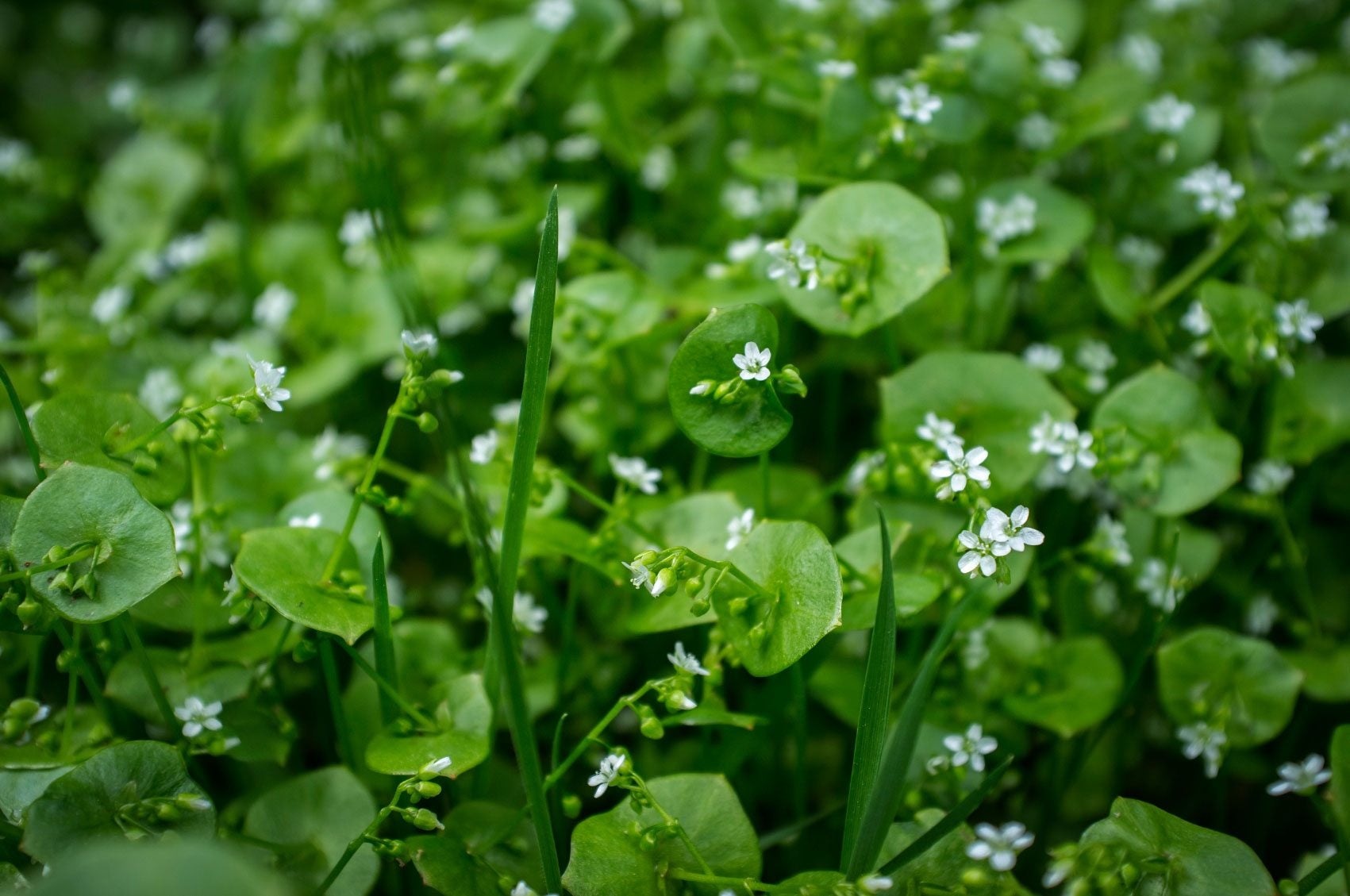Is Miner's Lettuce Edible: How To Grow Claytonia Miner's Lettuce

Everything old is new again, and edible landscaping is an example of this adage. If you are searching for a groundcover to incorporate in the landscape, look no farther than Claytonia miner's lettuce.
What is Miner's Lettuce?
Miner's lettuce is found from British Columbia south down to Guatemala and east into Alberta, North Dakota, South Dakota, Wyoming, Utah, and Arizona. Claytonia miner's lettuce is also known as Claspleaf miner's lettuce, Indian lettuce, and by its botanical name of Claytonia perfoliata. The generic name of Claytonia is in reference to a botanist of the 1600's by the name of John Clayton, while its specific name, perfoliata is due to the perfoliate leaves which completely encircle the stem and are attached at the base of the plant.
Is Miner's Lettuce Edible?
Yes, miner's lettuce is edible, hence the name. Miners used to eat the plant as salad greens, as well as the edible blossoms and stems of the plant. All these portions of Claytonia can be eaten either raw or cooked and are a great source of vitamin C.
Care of Claytonia Plant
Miner's lettuce growing conditions tend to be cool and moist. This aggressive self-seeding plant can overwinter in USDA zone 6 and warmer and is an excellent edible groundcover. Miner's lettuce growing conditions in the wild tend towards shaded sites such as under tree canopies, oak savannas, or western white pine groves and at low to medium elevations. Claytonia miner's lettuce can be found in soil conditions from sand, gravel road tar, loam, rock crevices, scree, and river silt. The plant is propagated via seed and germination occurs rapidly, only seven to ten days until emergence. For home garden cultivation, seed may be dispersed, or plants set in virtually any soil type, although Claytonia thrives in moist, peaty soil. Plant Claytonia four to six weeks before the last frost when soil temperatures are between 50 and 55 degrees F. (10-12 C.) in a shaded to partially shaded location, in rows that are 8 to 12 inches (20-31 cm.) apart, ¼ inch (6 mm.) deep and space the rows ½ inch (1 cm.) away from each other. From early to mid-spring and again in late summer to mid-fall for fall and winter harvest, Claytonia can be successively seeded for a continuous rotation of this edible green. Unlike many greens, Claytonia retains its flavor even when the plant is in bloom, however, it will become bitter when the weather becomes hot.
Sign up for the Gardening Know How newsletter today and receive a free copy of our e-book "How to Grow Delicious Tomatoes".

Amy Grant has been gardening for 30 years and writing for 15. A professional chef and caterer, Amy's area of expertise is culinary gardening.
